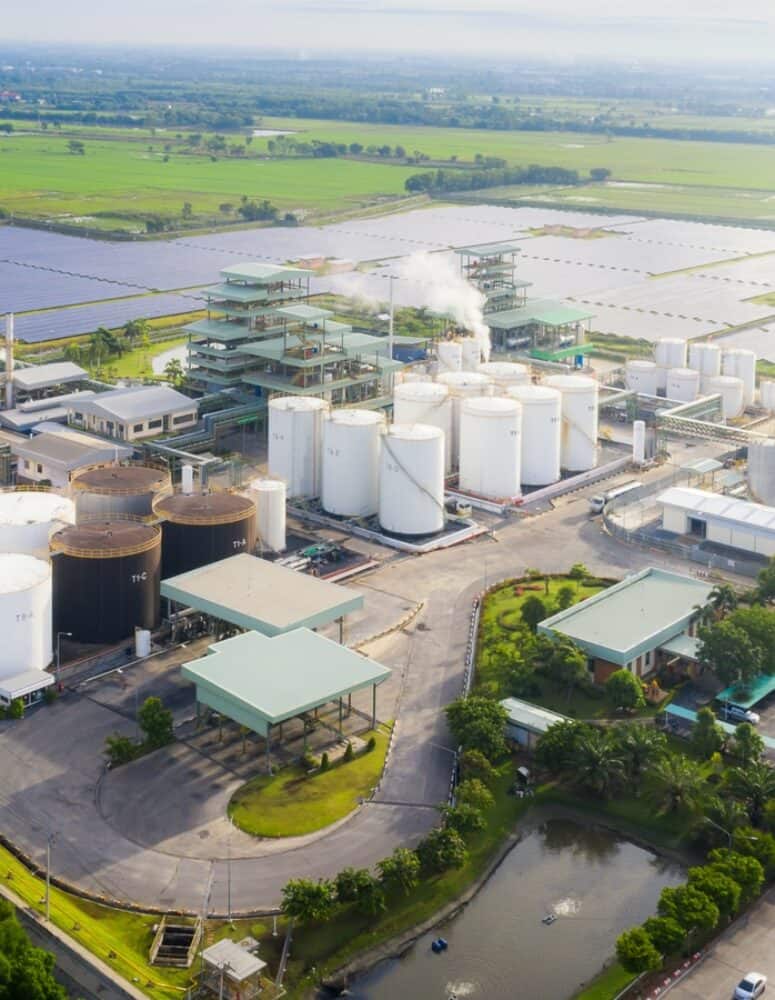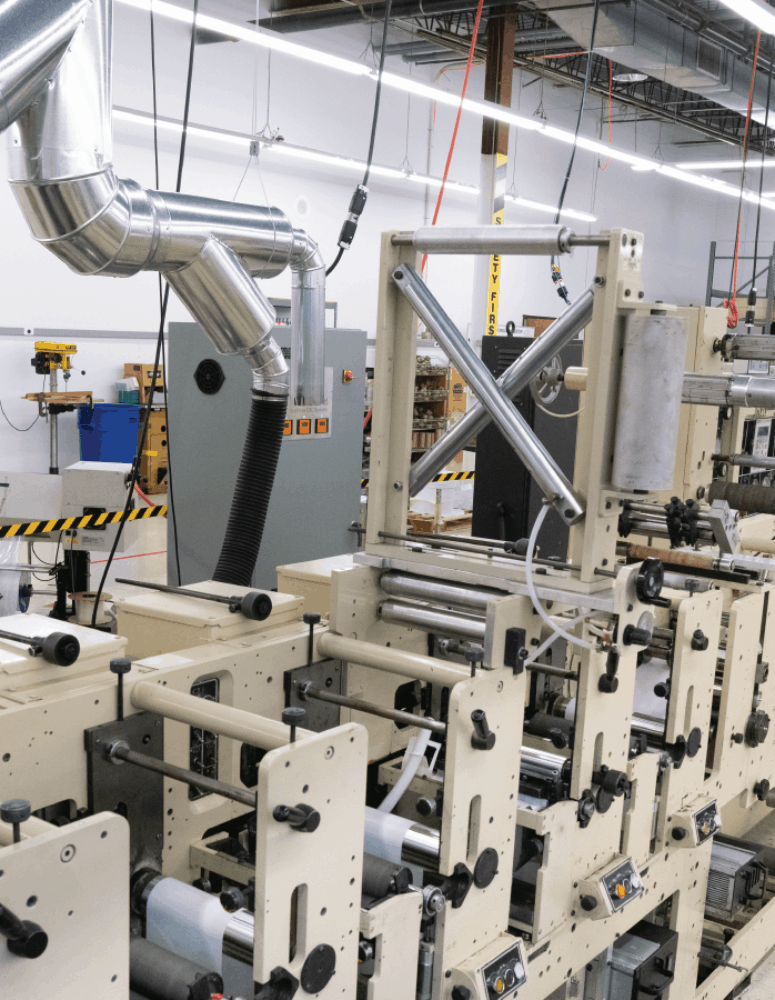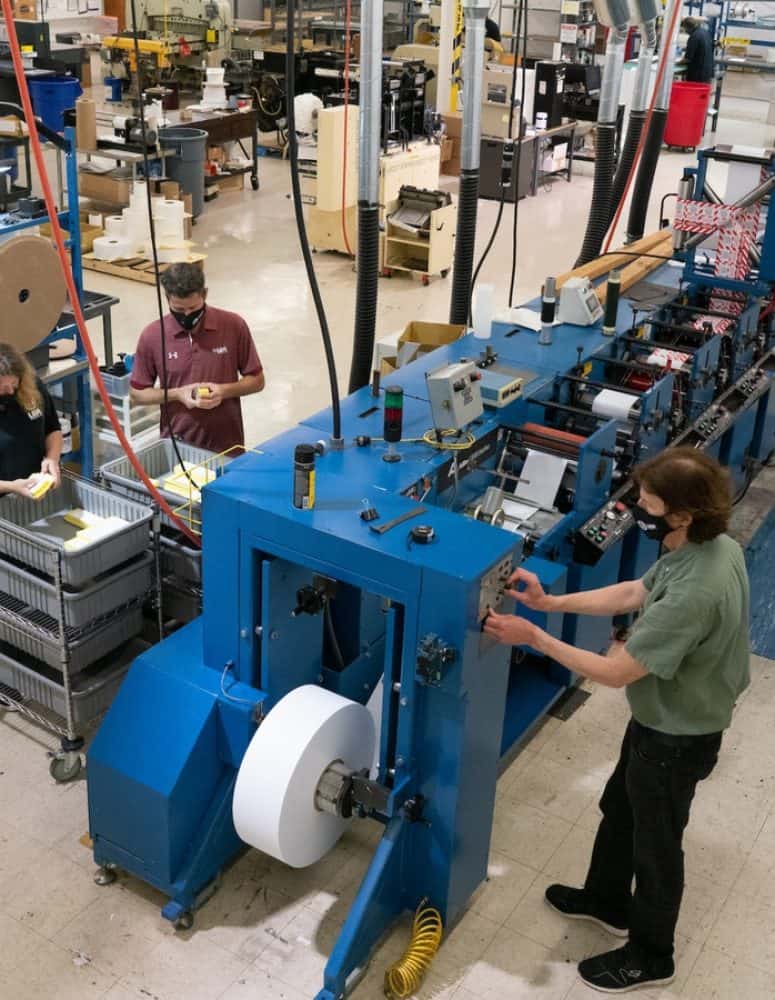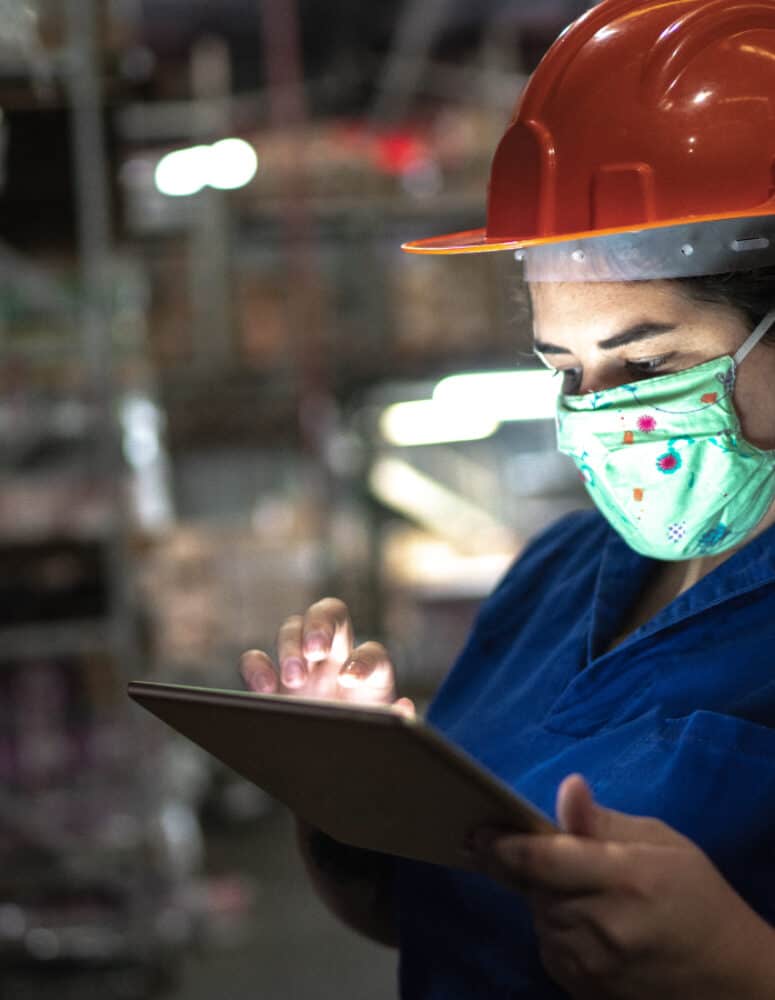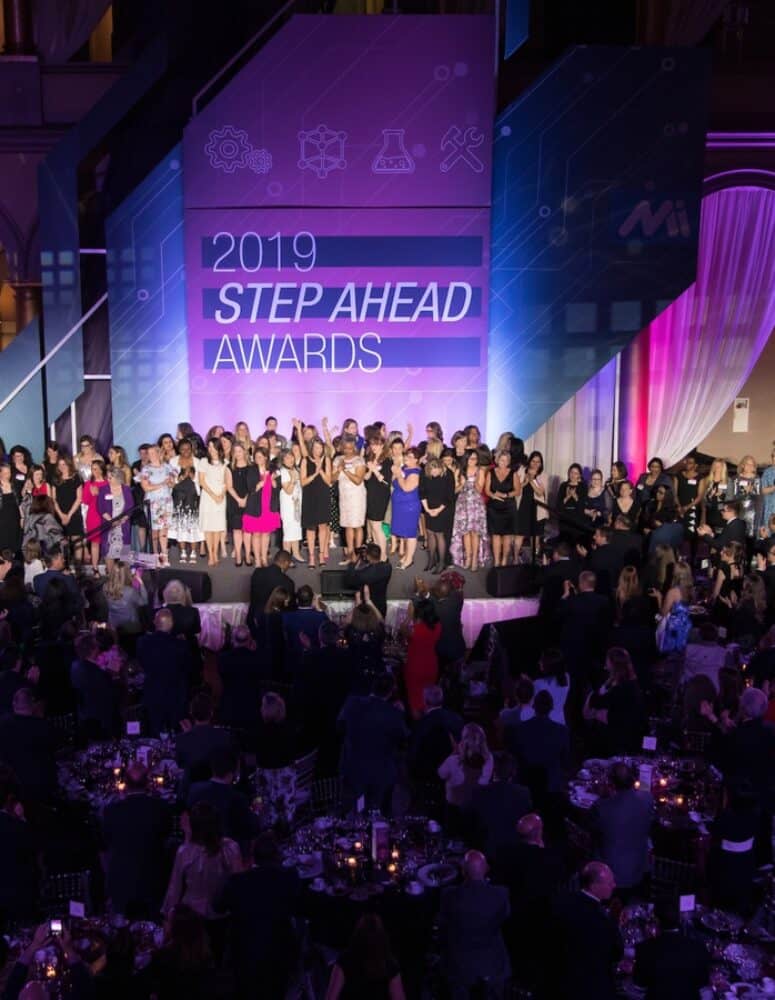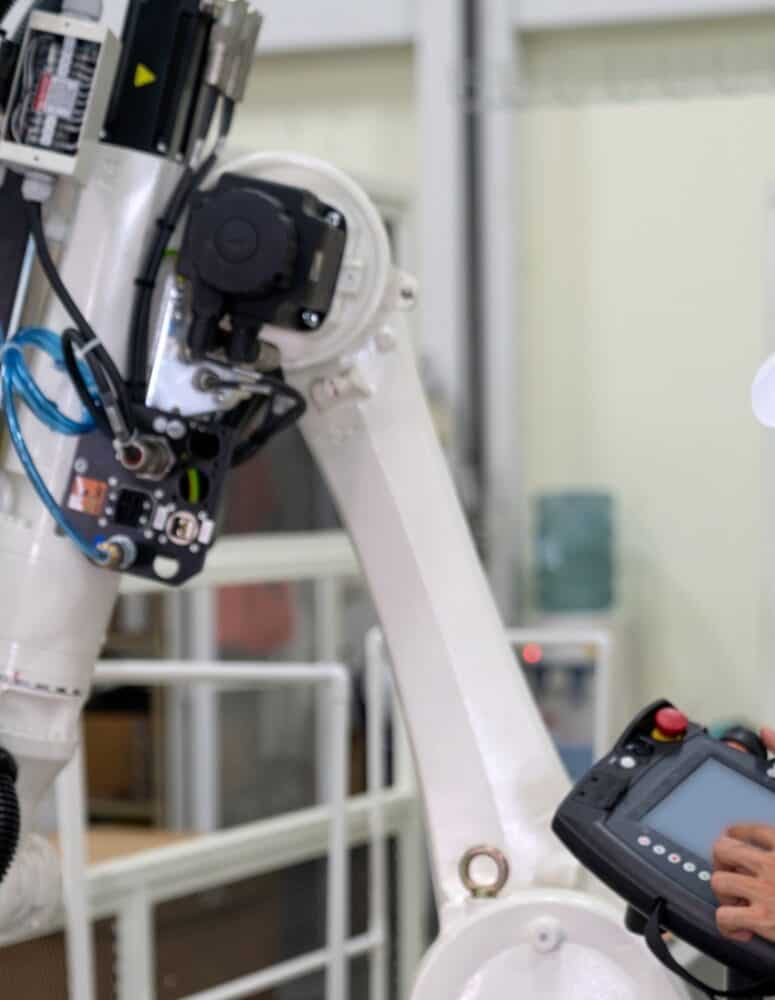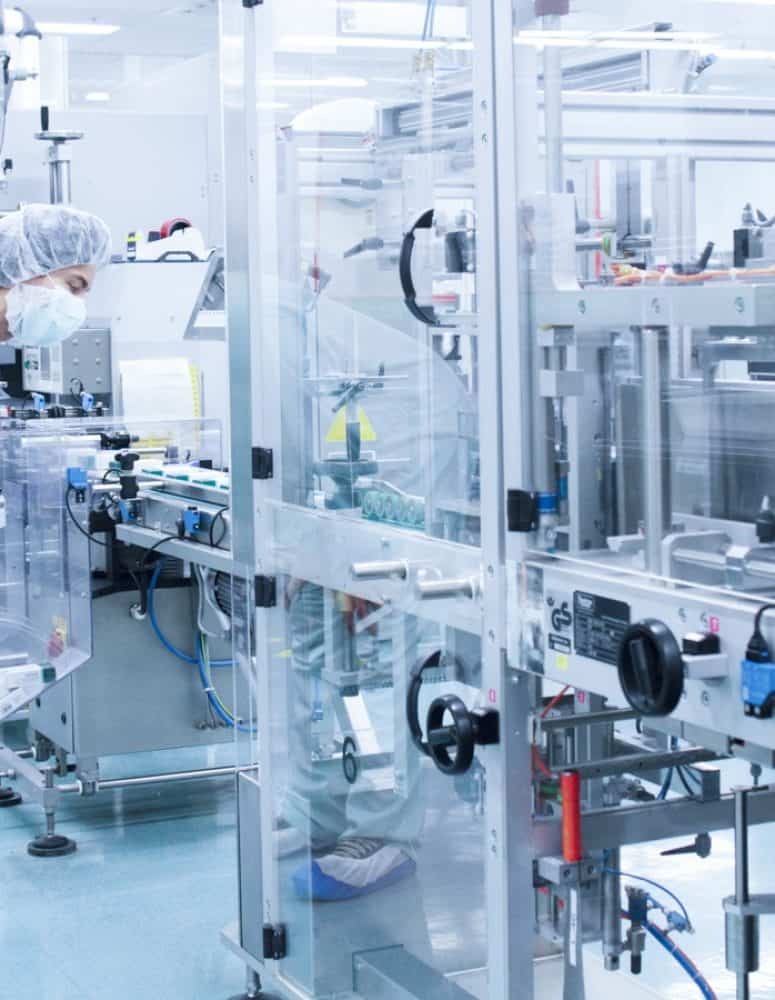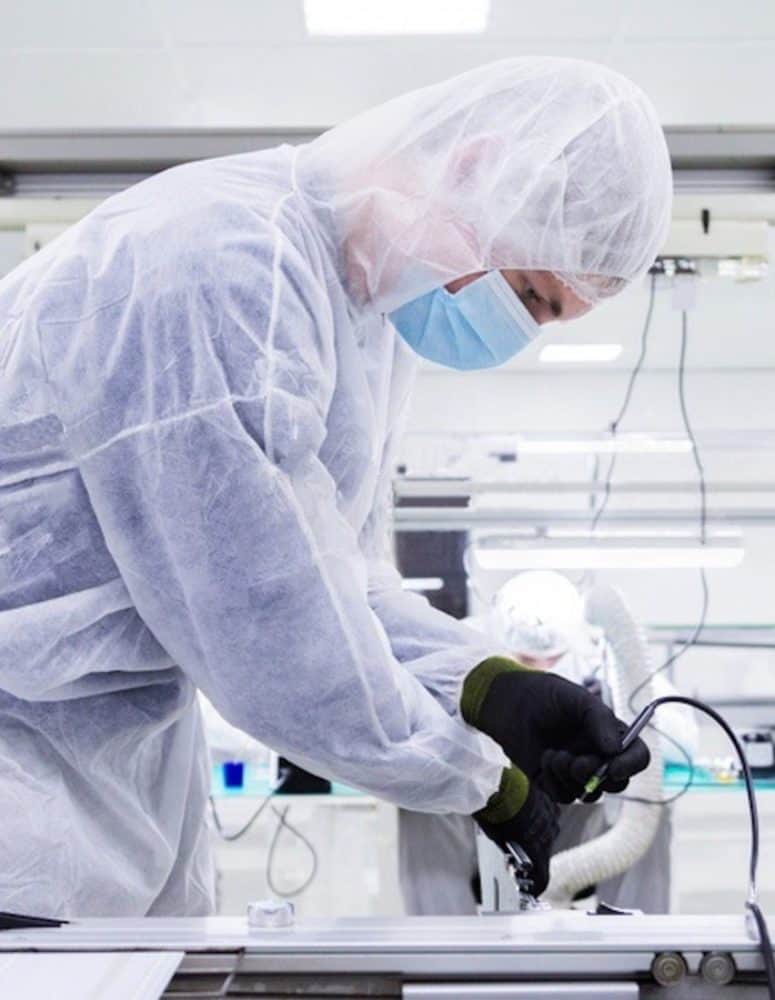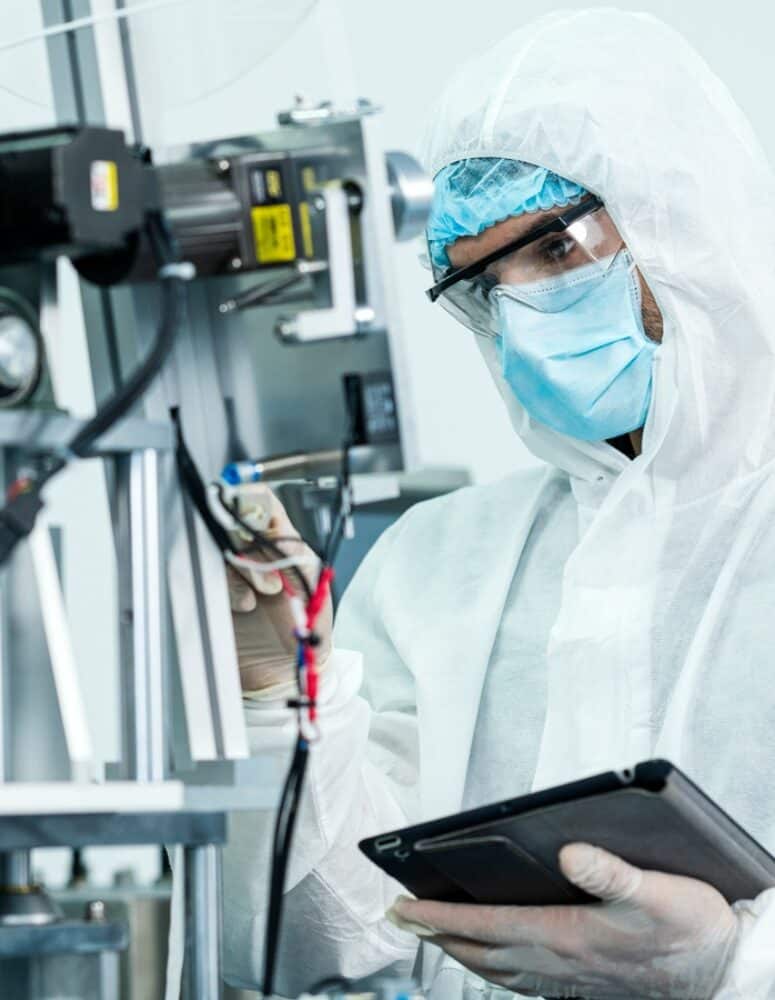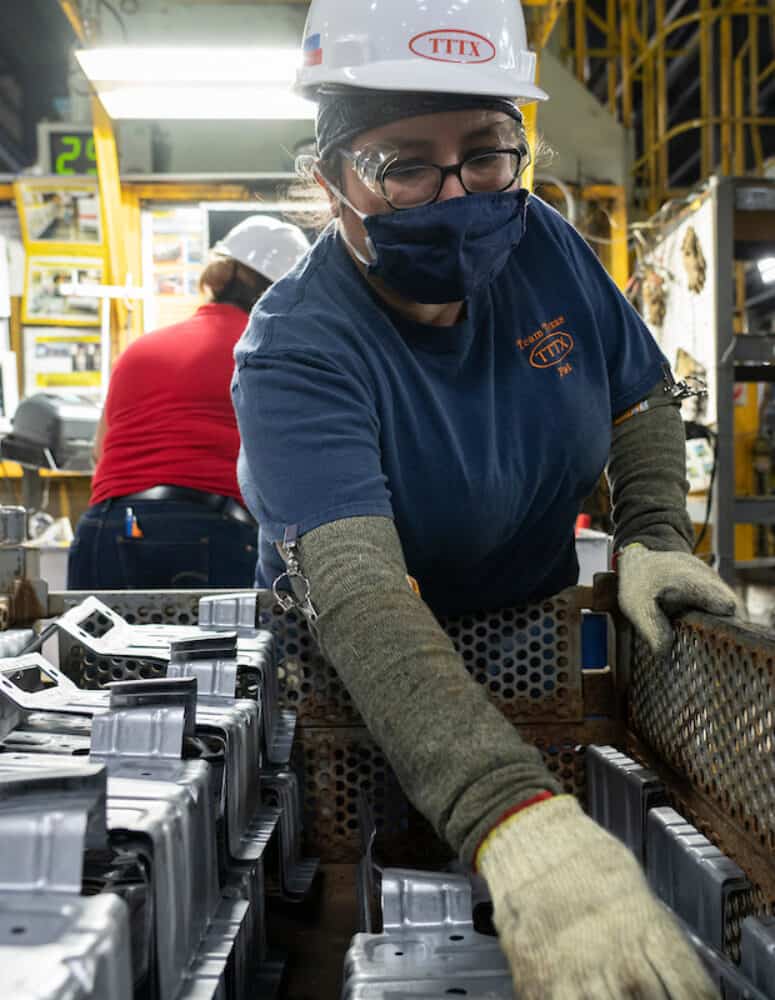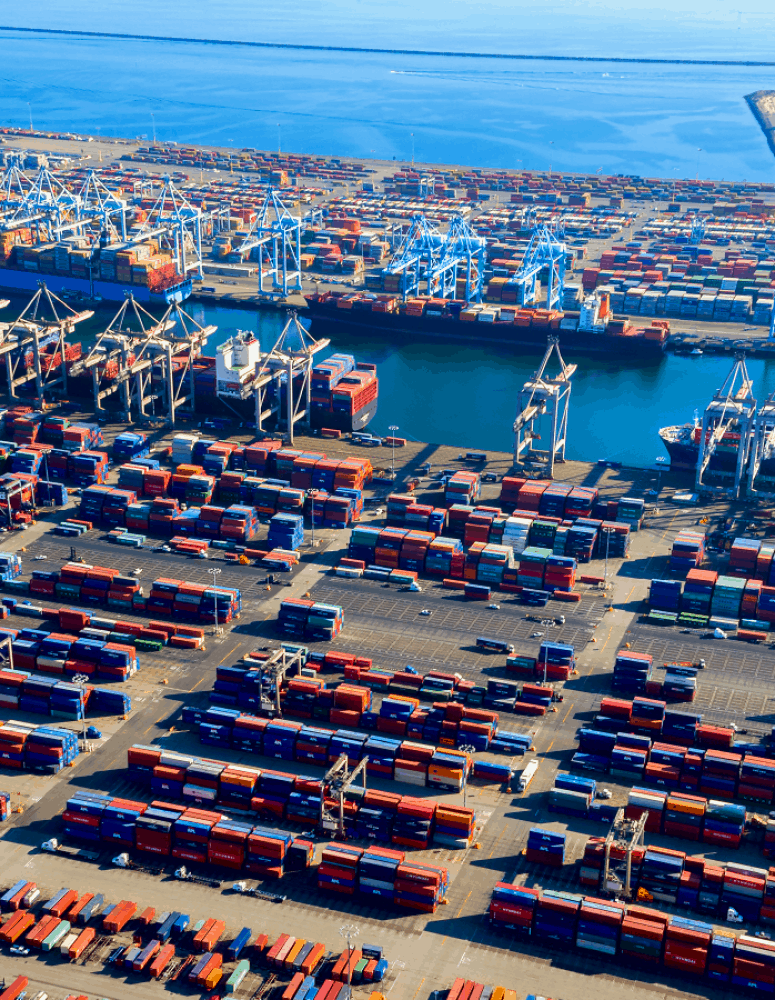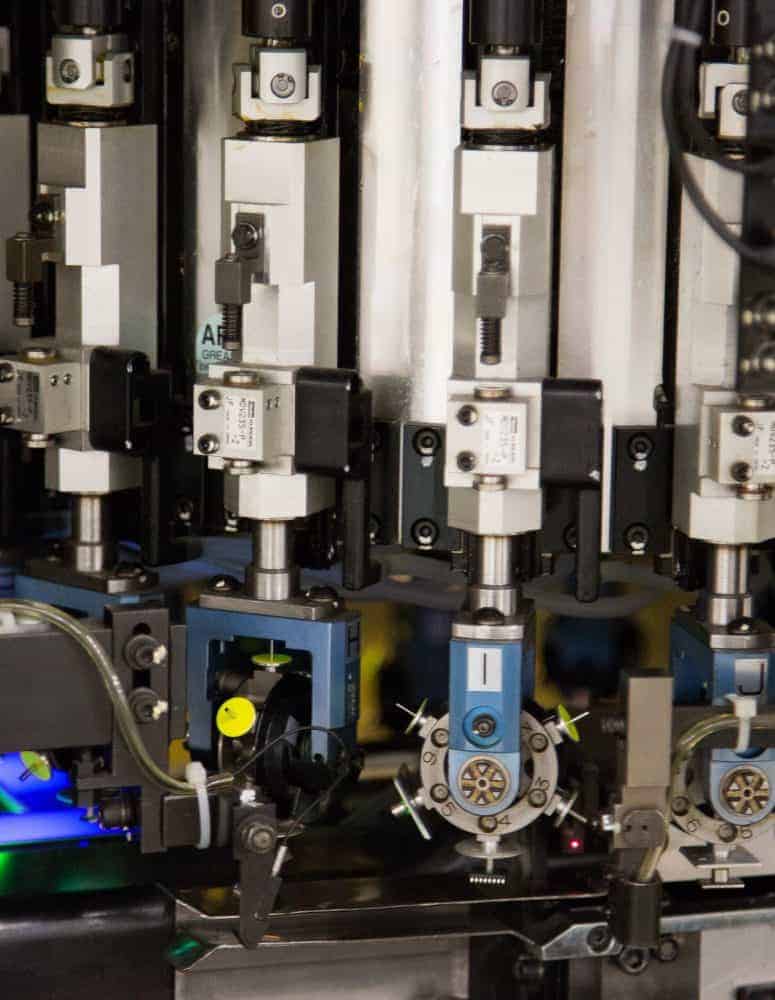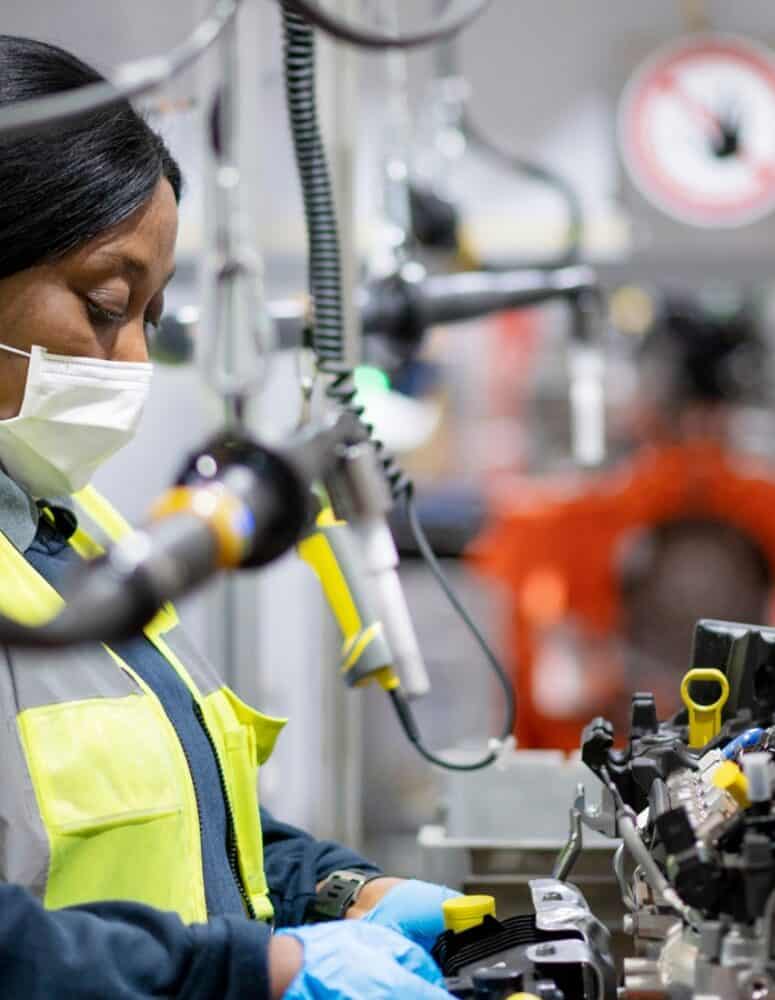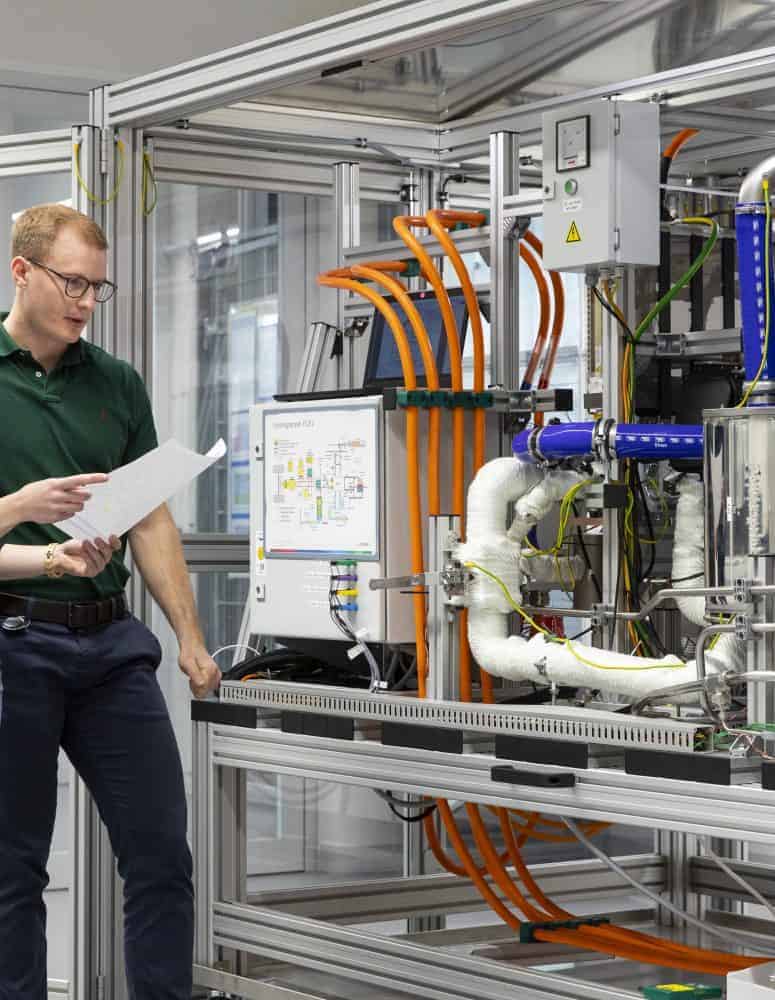Outlook Hazy for Manufacturing 4.0 Progress, Survey Shows
Get the Latest News
Sign up here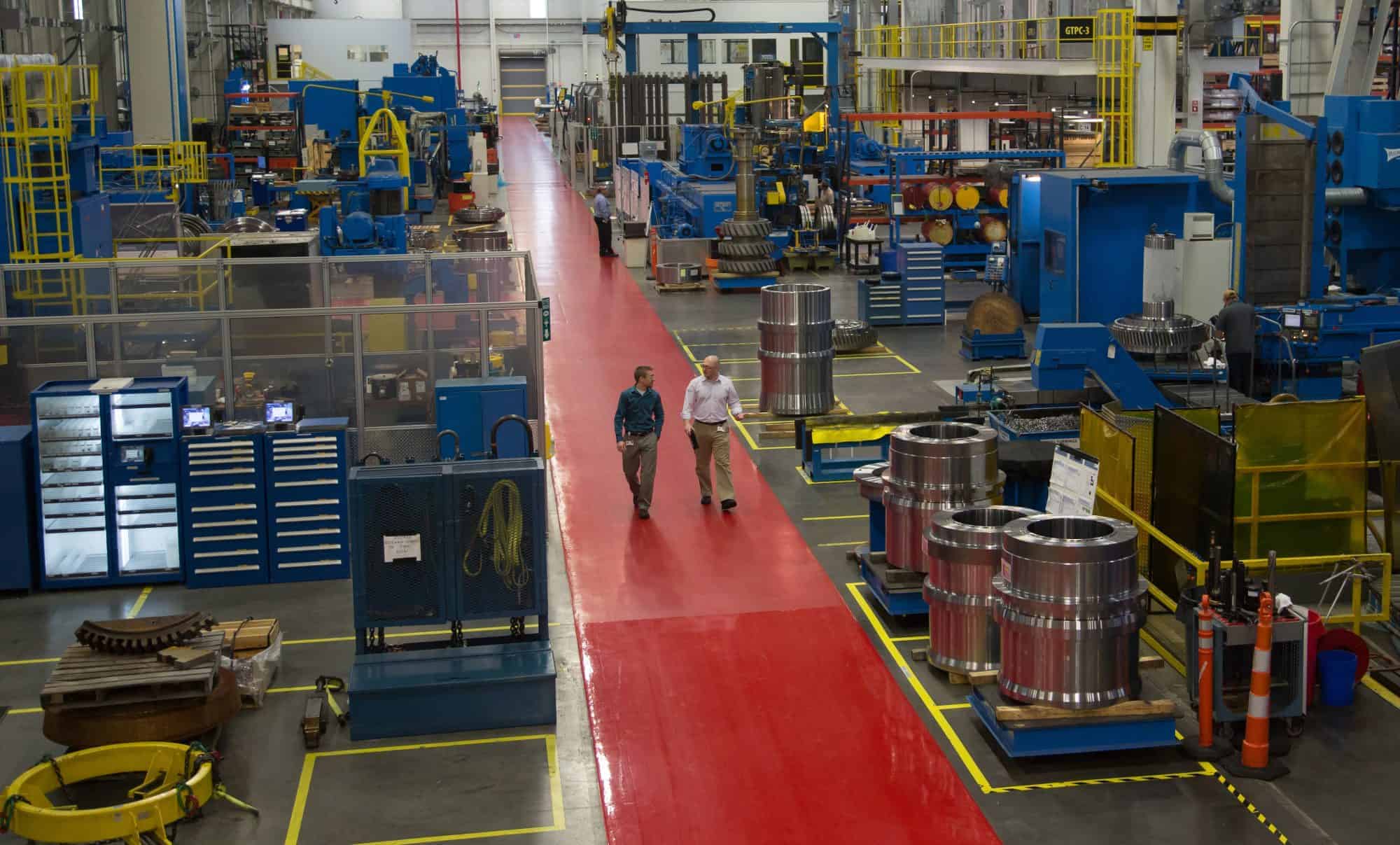
During the COVID-19 pandemic, many manufacturers raced to adopt advanced manufacturing technologies as a way to mitigate related disruptions. But there are signs the implementation is falling short of expectations, according to a new survey from the Manufacturing Leadership Council.
Is M4.0 adoption increasing? Respondents to the most recent survey were nearly evenly divided as to whether they were increasing digital-tool adoption in the wake of the pandemic: 30% said adoption had accelerated, 32% said it decelerated and 35% said it had not changed. Prior surveys overwhelmingly revealed that manufacturers were accelerating their digital investments.
Key findings: Other data points of note include the following:
- Most manufacturers gave themselves a low- to mid-level grade on their M4.0 maturity—somewhere between a 3 and a 7 on a scale of 1 to 10. When it comes to M4.0 roadmaps, the largest percentage of respondents (33%) said that formal roadmaps were still under development.
- Nonetheless, progress is being made in some areas. Customer support made the most strides in M4.0 adoption, with 12% of respondents rating themselves as advanced in this area compared to only 4% last year. Additionally, 20% of manufacturers surveyed said their plant floors are extensively networked and IP enabled, and 52% said they have digitization for production and assembly processes.
- More manufacturers are keen to take advantage of M4.0 technologies: 43% of respondents said they use machine learning, and another 27% said they plan to bring it online in the next two years.
- The biggest jump for planned usage is for digital twins: 32% of respondents said they plan to implement this technology in the next two years, on top of the 25% who are using it now.
Major risk: Many manufacturers find themselves in a perilous cybersecurity position, according to the survey. Just 19% have a fully formed cybersecurity program that includes workforce preparedness plans, employee training and routine drills that simulate a cyberattack.
- This is likely why 57% of respondents say that their company’s plant floor systems and assets are only partially secure against cyberattacks. The need to upgrade legacy equipment tops the list of potential challenges, with 59% of manufacturers reporting that they should do so.
Other struggles: Not surprisingly, 53% of respondents cited a lack of skilled employees as their top challenge. Some 39% said access to an adequate budget for M4.0 investments was their chief problem.
The takeaway: Despite these issues, manufacturers still see tremendous potential in embracing M4.0, according to the survey’s findings.
- Sixty-seven percent of respondents cited better operational efficiency as a top benefit of M4.0; 49% cited better decision-making, 47% cited greater speed and flexibility and 42% cited cost reduction.
- Disruptions of the past two years have made manufacturers want to move toward becoming factories of the future, but the realities of the ambitious undertaking are proving daunting. Those who persist, however, are likely to find great rewards.
How a 5G Smart Factory Doubled Ericsson’s Output
Get involved
Get involved
How will the 5G transition affect manufacturing? If you ask Ericsson Senior Vice President Åsa Tamsons, enormously.
5G will help drive global transformation, innovation and sustainability in our sector, Tamsons recently told the NAM’s Manufacturing Leadership Council. She sat down with MLC Co-Founding Executive Editor and Senior Content Director Paul Tate at Ericsson’s new 5G Smart Factory in Lewisville, Texas, to tell us more.
About Ericsson: Founded in 1876, Ericsson Inc. is a leading provider of information and communication technology. The company is now a $25 billion global enterprise with 100,000 employees serving clients in 180 countries.
About the Lewisville plant: Ericsson describes its Lewisville plant, which opened in March 2020, as a “5G-enabled, digital native” facility.
- “We wanted to be able to obtain data from every single source, device, machine and person operating in the facility, both now and in the future,” she said. “One part was implementing 5G, but we also needed a data architecture to secure that and to use equipment that is able to extract both production data and operational status.”
Development process: In its journey to Manufacturing 4.0, Ericsson used a particularly agile development process.
- “We had a mission to develop 25 use cases within a year,” Tamsons said. “In the first eight months, we launched seven of those 25 use cases. In the remaining four to five months, we launched the other 18. It just shows the power of doing that groundwork, while also demonstrating that you can launch end-to-end solutions in rapid time. Then you really start to have platforms that you can scale.”
Measuring impact: The Lewisville facility serves one of Ericsson’s biggest and most important markets in the world—yet it is operated by just 100 people.
- The plant delivers 2.2 times more output than similar sites that don’t have the same degree of automation or technology in place.
Lighthouse status: Lewisville is also one of the world’s first manufacturing plants to achieve Global Lighthouse Network status under the World Economic Forum’s new sustainability category.
- A combination of recyclable and reused materials, renewable energy, an ideal location close to a major airport and advanced manufacturing technologies supported this award.
- “Innovation is not all about technology,” Tamsons said. “It’s about how you apply it and how you can use the best of technology to create better solutions that are also more sustainable.”
What’s next: The Lewisville plant has plans for further innovation.
- “We’ll continue to build out the data structure and cloud capability, really focusing on how we can scale up the value of existing use cases and applications and on what the next use cases will be,” she said. “We’re continuing to invest in upgrading our manufacturing sites to develop a reliable, sustainable, global supply chain, not only in Lewisville, but across the world.”
Attend a plant tour: Join the MLC in Texas for the Ericsson Lewisville Plant Tour on Oct. 4–5 to see Ericsson’s 5G-enabled digital native, double Lighthouse award-winning plant for yourself. Save the date and watch for more details.
Meet the 2022 Winners of the Manufacturing Leadership Awards
Get the Latest News
Sign up here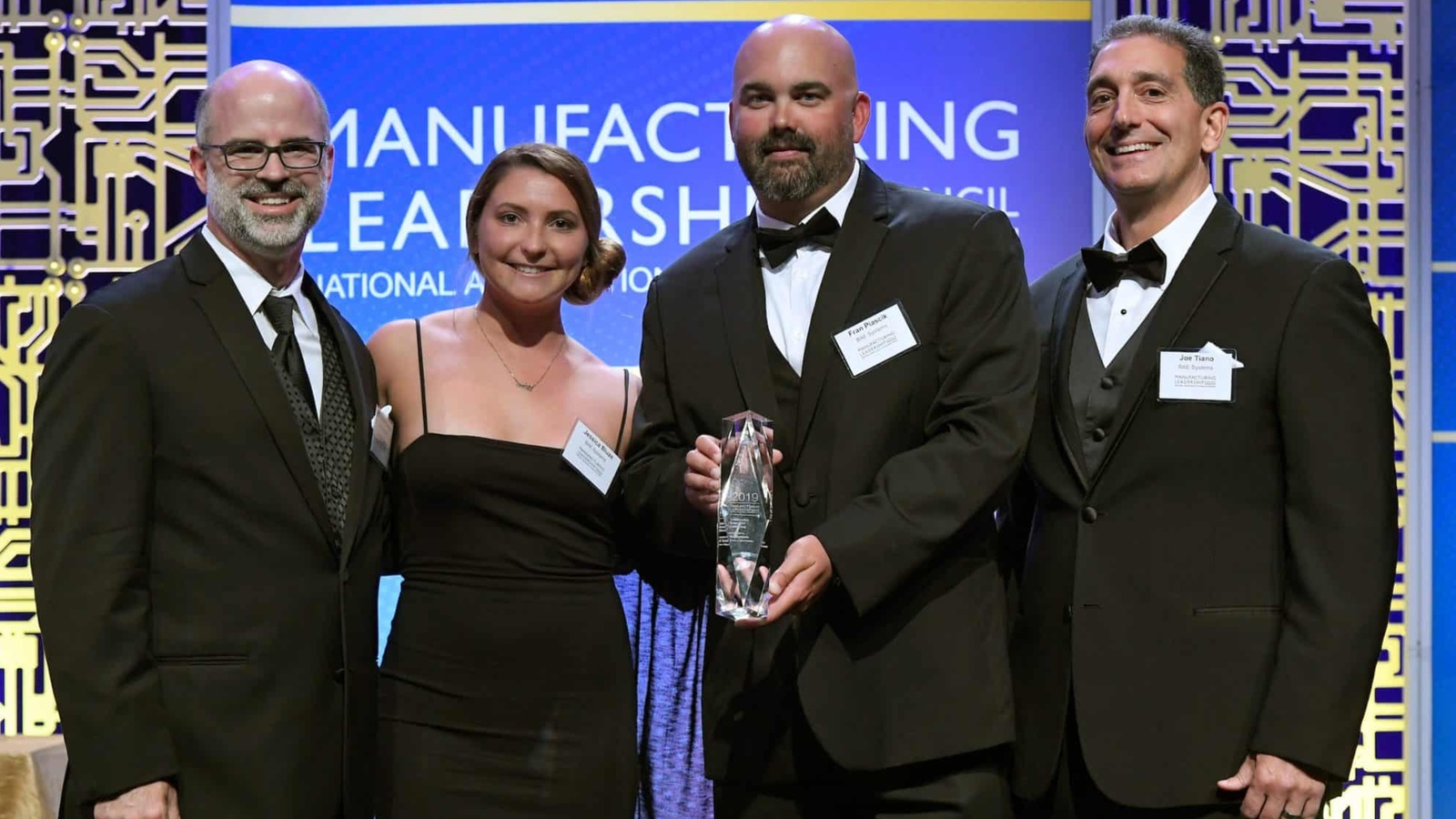
A group of world-class manufacturers and their leaders have been recognized for their achievements by the 2022 Manufacturing Leadership Awards.
About the awards: Presented by the Manufacturing Leadership Council, a division of the NAM, the awards recognize excellence in digital manufacturing. Since the program’s founding in 2005, more than 1,000 high-performing projects and individual leaders have been honored with an award. Winners represent companies of varying sizes in a wide array of industries.
This year’s awards were given in nine project categories and two individual categories. Some project categories include AI and Machine Learning, Digital Supply Chains and Digital Network Connectivity. Judging is done by a panel of industry experts, many of whom are past winners themselves.
Why it matters: The movement toward smart factories allows manufacturers to leverage data to become more efficient, productive, sustainable and competitive. In the difficult business conditions that many are experiencing, data-driven operations can mitigate disruptions and even predict them before they happen.
“This year’s winners are exemplary for their compelling use of technology, innovative approach to problem solving and overall commitment to furthering the progress of Manufacturing 4.0,” said Manufacturing Leadership Council Co-Founder, Vice President and Executive Director David R. Brousell.
Gala coming in June: Winners will be honored at the Manufacturing Leadership Awards Gala on Wednesday, June 29, 2022, at the JW Marriott Marco Island Beach Resort in Florida. The gala will also feature the announcement of this year’s Large Enterprise Manufacturer of the Year, Small/Medium Enterprise Manufacturer of the Year and Manufacturing Leader of the Year.
Select winners will present their projects at Rethink: The Manufacturing Leadership Council Summit, the industry’s premier event focused on Manufacturing 4.0.
See the complete list of winners here.
Manufacturers Gain a Competitive Edge with the NAM’s MLC
Get the Latest News
Get involved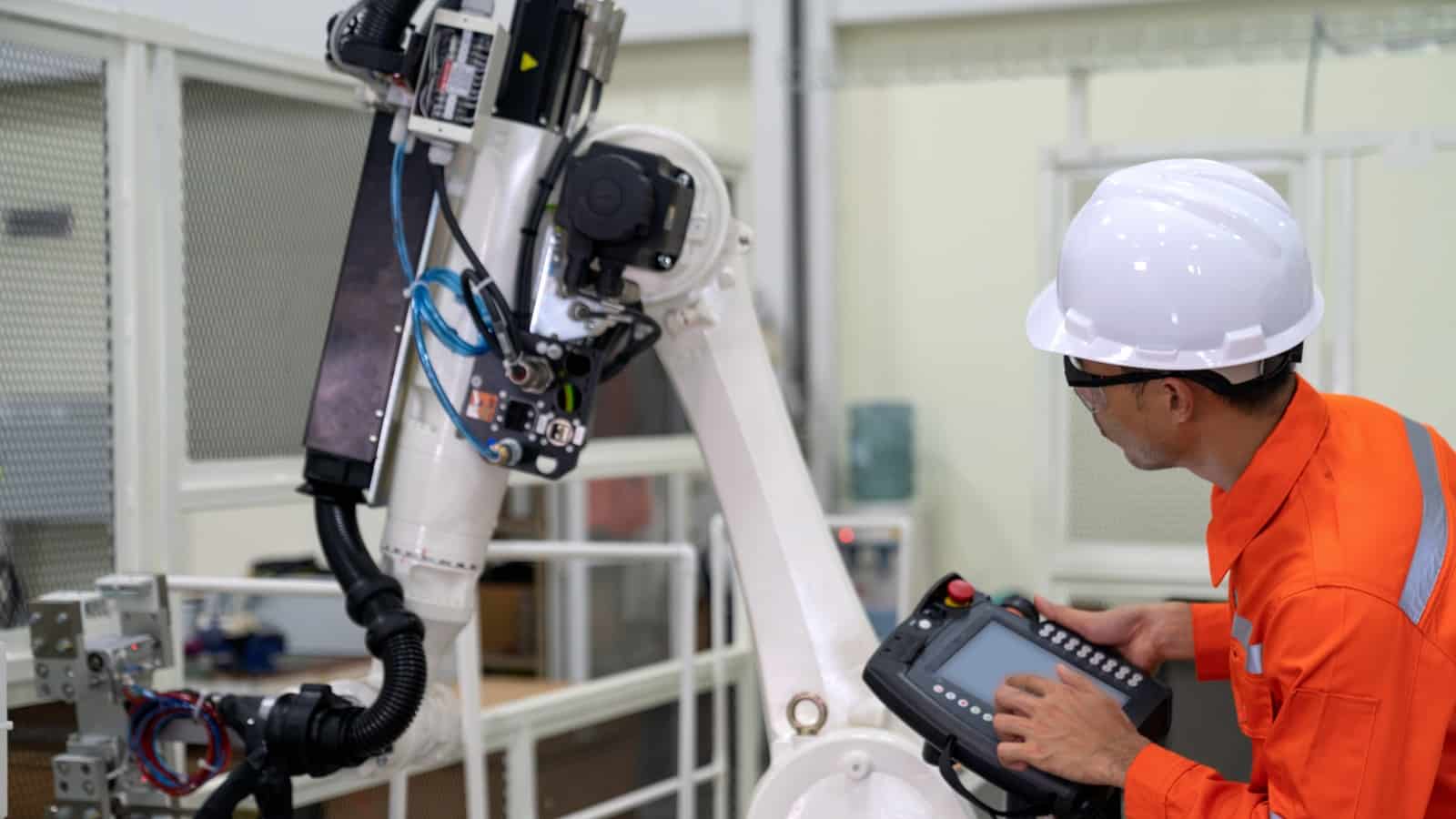
If you’re interested in Manufacturing 4.0, you should know about the Manufacturing Leadership Council. The MLC, the division of the NAM dedicated to digital transformation in manufacturing operation, aims to help manufacturing leaders understand the digital future and the technology, leadership and organizational structures necessary to improve competitiveness and operational excellence.
Critical issues focus: Every year, the MLC creates a Critical Issues agenda around topics determined by its membership of more than 2,600 industry leaders. These include transformative technologies, cybersecurity, sustainability, next-generation leadership and more. The MLC offers focused resources to help manufacturers assess the opportunities and challenges ahead.
Why it matters: Given the industry’s rapid pace of change, manufacturers need to innovate to stay competitive. The MLC helps manufacturers identify new technologies and discover best practices so they can keep up in the digital era.
Key resources: There are many ways manufacturers can tap into the MLC:
- The Manufacturing in 2030 Project: This year-long initiative looks into the future of manufacturing and examines megatrends that will shape the world by 2030. The project helps manufacturers prepare for what lies ahead two, five and 10 years from now.
- Manufacturing Leadership Journal: This web-based publication offers the latest industry news, case studies and best practices from manufacturers working on the front lines. Each bimonthly issue focuses on a theme, such as M4.0 cultures, sustainability or factories of the future.
- Master Class Series: These virtual events explore new technologies, address manufacturer pain points and help those in the industry leverage opportunities by connecting with forward-thinking technology experts. Sessions in the series include interactive webinars, deep dives and tech talks.
- Plant tours: In-person and virtual plant tours provide the opportunity to see advanced manufacturing technologies in action at some of the best-known companies in the industry. Tours offer an up-close look at technologies and processes, plus Q&As with the experts.
- Rethink: The Manufacturing Leadership Council Summit: The MLC’s premier event for manufacturing leaders offers a unique blend of high-level content, interactive discussions and networking with industry peers. This year’s event takes place June 27–29 in Marco Island, Florida.
- Manufacturing Leadership Awards: Each year, these prestigious industry awards recognize operational and leadership excellence from world-class manufacturing organizations and individual leaders.
Get involved: Visit www.manufacturingleadershipcouncil.com to learn more or contact [email protected] to start the discussion on whether the MLC is right for you.
“A Driver Rather Than a ‘Retirer’ of Employment”: Technology Supports Workers
Get the Latest News
Get involved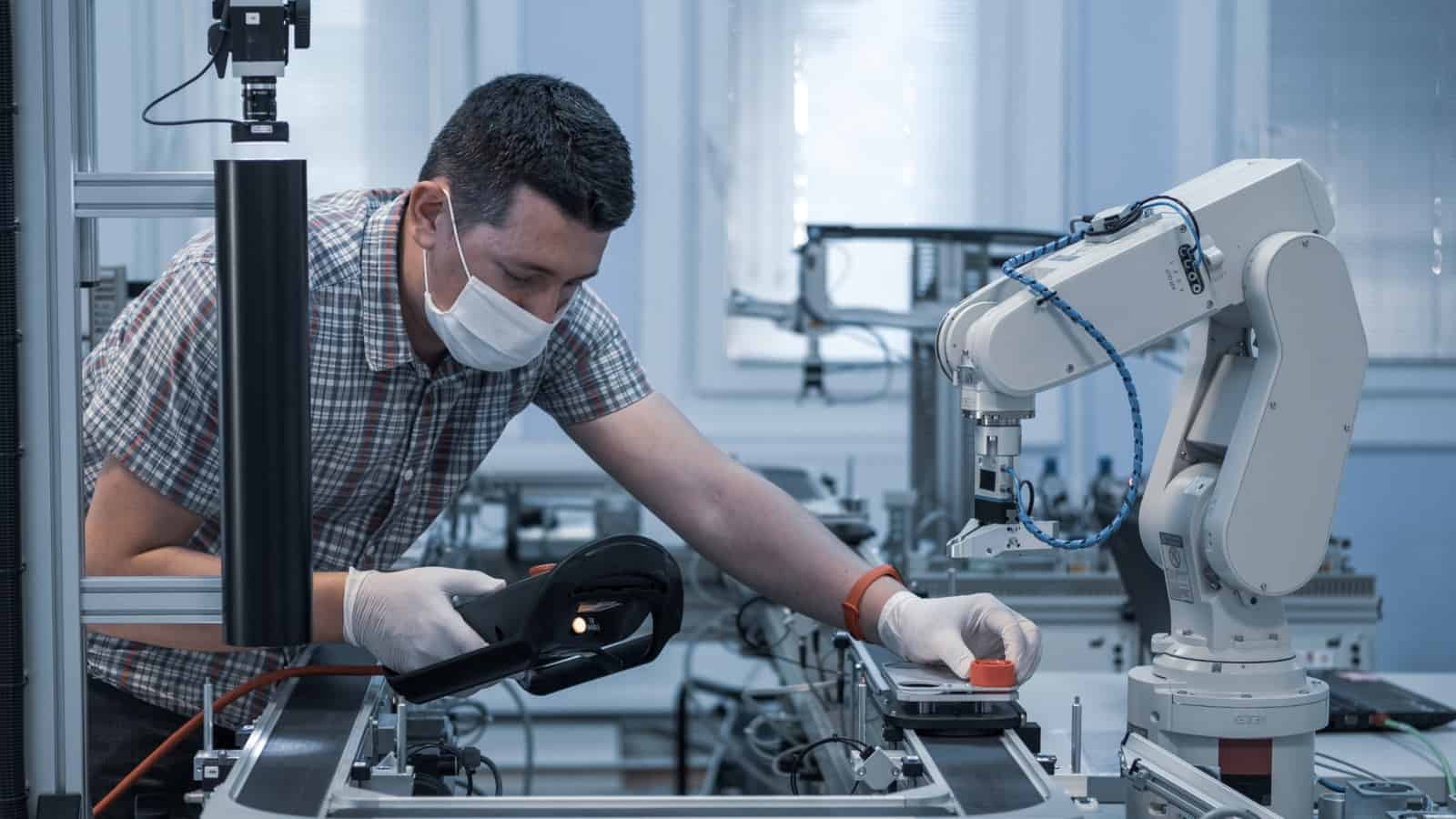
Manufacturers largely agree that technology will help workers, not displace them, speakers said at the Manufacturing Leadership Council’s recent virtual event, “M2030 Visions of the Future: Reflections on New Orleans.”
New Orleans readout: The webinar, which featured a panel of technology experts, was a recap of highlights from the MLC’s December 2021 Manufacturing in 2030 project event in New Orleans, which hundreds of manufacturers attended.
What the future holds: The recent online discussion was primarily about future technological trends in manufacturing, and three major themes emerged: Completely “lights-out” manufacturing (i.e., totally automated) is not a likely near-term reality for manufacturing; upskilling and reskilling will be crucial in attaining syncopation between employees and robots; and most manufacturers have some ways to go to achieve digital maturity.
Lights out? Try lights dimmed: There is a misconception that robotics, artificial intelligence and machine learning will replace human employees on the shop floor. The reality is that they all do best together.
- “I view it more as a ‘dimmer switch’ than ‘lights out,’ and the level to which you can dim depends on the kind of manufacturing you do,” said West Monroe Senior Manager of Consumer and Industrial Practice Alex Jay. Particularly when it comes to “complex materials, [manufacturers will] need a nuanced touch,” which will require more, not less, human interaction.
- “There will be a dimmer switch, a natural limit to how far you would automate,” said Infor Senior Vice President of International Strategy Andrew Kinder. “In the next eight years, we will see more use of technology on the plant floor. Is this a concern for employment? I think the World Economic Forum put that to bed when they said … technology will create 12 million more jobs than it will ever destroy.”
- EY Principal of Strategy and Transactions Rosco Newsom agreed. “[Manufacturers] don’t see ‘lights out’ happening in the near future.”
Upskilling and reskilling: The increased use of Manufacturing 4.0 technologies on the shop floor will only increase the need for skilled talent, the panelists agreed.
- First, “there is reskilling and upskilling required even to make those ‘lights out’” changes, said NTT Data Senior Director of Manufacturing Industry Solutions Baskar Radhakrishnan.
- Complex materials that need nuanced touch and geometric dimensioning and tolerancing “will need more human interaction,” not less, Jay said.
Maturity not yet reached: As was evidenced by questions from the webinar audience and comments from manufacturers during the New Orleans event, many manufacturers could use guidance when it comes to using more technology.
- For smaller manufacturers wondering where to start implementing Manufacturing 4.0, look to “labor-intensive, repetitive tasks,” Radhakrishnan said. “That’s where you start.”
The last word: Robotics aren’t going to put anyone out of a job. As Kinder said, “Tech seems to be a driver rather than a ‘retirer’ of employment.”
Manufacturers Explore New Tech and Best Practices at MLC Master Class Series Events
Get the Latest News
Sign up here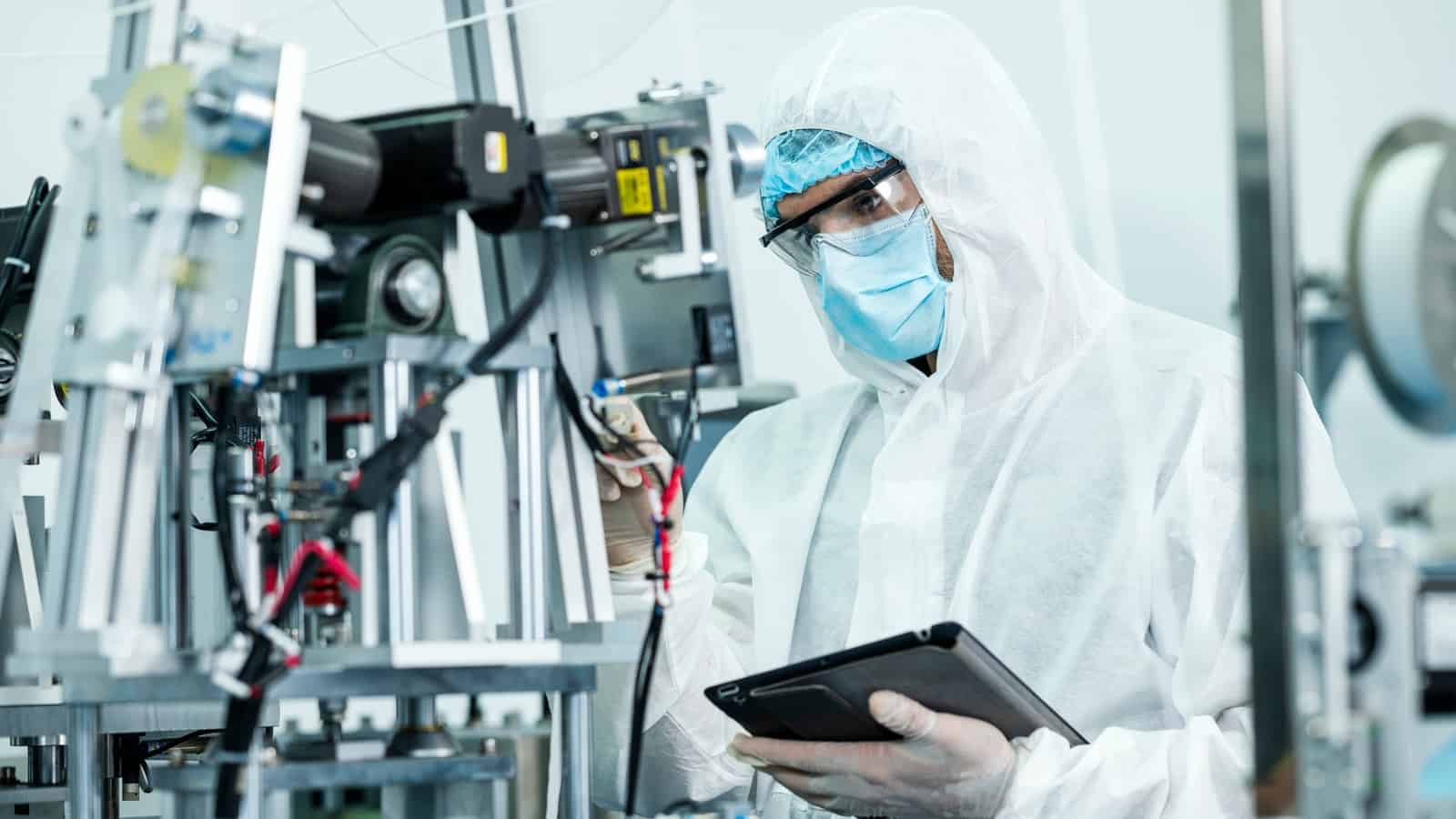
To help manufacturers navigate Manufacturing 4.0, the NAM’s Manufacturing Leadership Council launched the MLC Master Class Series. This series includes regular virtual events designed to explore new technologies, address pain points and showcase opportunities—all while connecting forward-thinking manufacturing leaders. Sessions in the series include interactive webinars, Technology Deep Dives and Tech Talks.
Webinars: With formats such as panel discussions, use cases and executive interviews, the Master Class webinars are especially beneficial to manufacturers who want to learn about the innovative technologies that have the potential to enhance their operations. These virtual sessions are a chance to hear directly from the digital manufacturing experts moving our industry forward. Content and discussions during these sessions provide insights on identifying, evaluating and implementing new technologies as well as providing strategies for leadership in the age of digital progress.
Deep dives: Deep dives are 60-minute interactive sessions that continue and expand the learning necessary to be successful with new technologies. They provide a more in-depth understanding of specific technologies, where they can be applied and how they can lead to new competitive advantages. Each deep dive also features short breakout sessions focused on either “How Do I Get Started?” or “How Do I Further Leverage?”
Tech talks: Tech talks are 30-minute candid conversations with subject-matter experts who provide insights into how specific technologies are designed to accelerate and drive the journey to Manufacturing 4.0. From purpose and adoption, to challenges with implementation and best practices on operations, MLC’s tech talks will enable you to stay abreast of new and evolving manufacturing technologies within the marketplace.
Master Class events take place throughout the year. Manufacturers at all stages of digital transformation are invited to participate in the entire series or choose individual events based on their needs and interests. To see upcoming classes and access recordings of past sessions, click here.
How Manufacturers Can Navigate Supply Chain Challenges
Get the Latest News
Get involved
As the global supply chain, worker shortage and wage inflation challenges many had hoped were transitory dig in their heels, manufacturers everywhere are wondering how best to get around them.
Panelists at “Successfully Navigating Current Supply Chain Disruptions,” a webinar hosted by the NAM’s Manufacturing Institute, Manufacturing Leadership Council and professional services firm PwC, sought to answer that question.
We rounded up the speakers’ top tips for manufacturers seeking to sustainably and profitably maneuver the several sizable hurdles they still face going into 2022.
- Break down siloes. Now that manufacturers are having to replace traditional supply chain models, changing their company operations to have staff work across siloes is more important than ever, said PwC Partner Debjit Banerjee.
- Expect disruption. If it taught us nothing else, COVID-19 conveyed the importance of being prepared for the unexpected. Going forward, manufacturers would do well to not just plan for the possibility of disruption, but to assume it will come. To that end, preplanned “differentiated customer service” and disruption drills should become the norm, Banerjee said.
- Advance your supply chain planning. Increasingly, Nexteer Automotive, a global maker of steering and driveline components, is focusing on advanced supply chain planning, programs that help predict shipments, supply and demand for smoother operations, said Nexteer Automotive Vice President of Global Manufacturing Operations Dennis Hoeg. With it, “decisions can be made smarter, earlier.”
- Automate. Manufacturers should consider automating repetitive “transaction” work and reserving their employees for analytical tasks that only humans can do, according to Hoeg.
- Balance agility and resilience. Before the pandemic, “we were working on a strategy that was based on agility,” said Rockwell Automation Chief Supply Chain Officer Ernest Nicolas Jr. “Through the pandemic … we had to reprioritize. We had to take a step back to balance agility and resilience.” Manufacturers that want a better agility-resilience balance can do so “through data, process and technology” enablement, according to Nicolas.
- “Relentlessly prioritize.” Nicolas so believes in this advice that he ended his presentation with it. “There’s so much going on right now; we want to be certain we manage our priorities,” he said. “So, there’s a lot we’re saying ‘not now’ to …. but it’s not a matter of ‘no.’ It’s a matter of, ‘We’ve got to get these things finished so we can lay the foundation’” in this new normal.
What Will Manufacturing Look Like in 2030?
Get the Latest News
Sign up here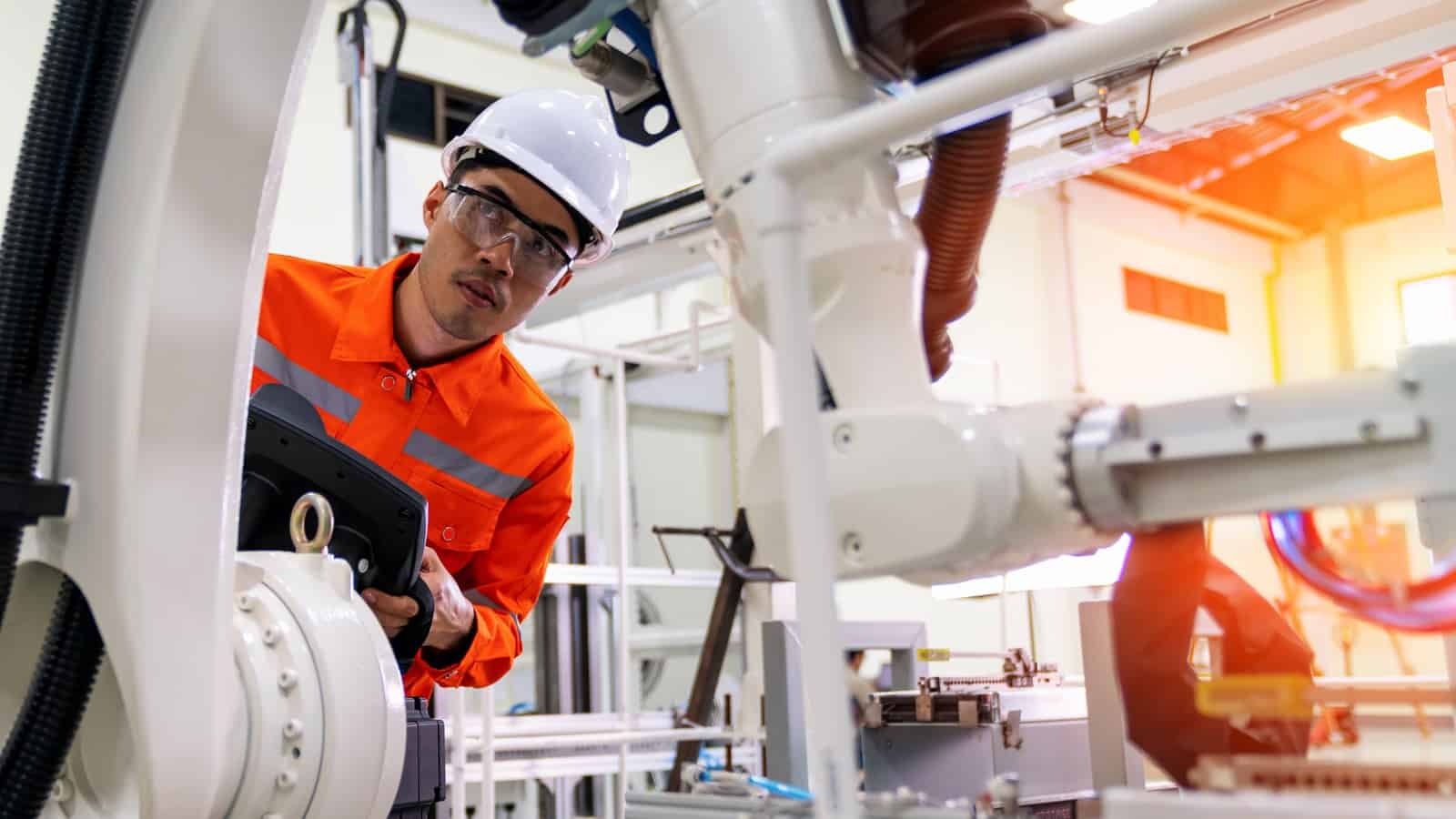
Given the many uncertainties brought about by COVID-19, supply chain disruptions, labor shortages and more, it might seem as though what happens in the coming decade is anyone’s guess. But on closer examination, there are signposts signaling some of what’s to come—and a closer look at them can help manufacturers plan for the coming years.
At the recent “Manufacturing in 2030: The Shape of Things to Come” event hosted by the NAM’s Manufacturing Leadership Council, in-person and virtual attendees heard from experts, examined trends, explored technologies and discussed upcoming challenges. The goal: to look into the future of manufacturing.
“We can’t be certain about what tomorrow will bring, let alone what might be in 2030,” said MLC Co-Founder David Brousell in his opening remarks. However, “we can project or extrapolate based on current trends and conditions, with a reasonable amount of probability, what the shape of manufacturing will look like in 10 years’ time.”
Why Manufacturing in 2030: Everything in manufacturing is changing, driven by technologies capable of giving decision makers more information than ever before. Prior to the pandemic, companies were already making changes to their organizational structures, shifting from hierarchical models to more collaborative means of organizing people and processes. COVID-19 has only accelerated this change.
Brousell explained: “All around us, conventional notions of what can be accomplished in production … are being reimagined.”
Challenges and opportunities: Upcoming challenges discussed included continued global supply chain disruptions, climate change and the redefinition of the human–machine relationship. Speakers examined the technological, organizational and leadership characteristics that can set manufacturers apart and provide them with a competitive advantage.
What’s next: The MLC will soon launch its yearlong “Manufacturing in 2030” project, which will help manufacturers explore, understand and plan for the future of the manufacturing industry in the next decade.
Said Brousell: “If we do things right in the next 10 years, we have the opportunity to create the greatest engine of manufacturing production humankind has ever seen.”
“What’s Ahead for 2022?” Predicts Growth, Continued Challenges
Get the Latest News
Get involved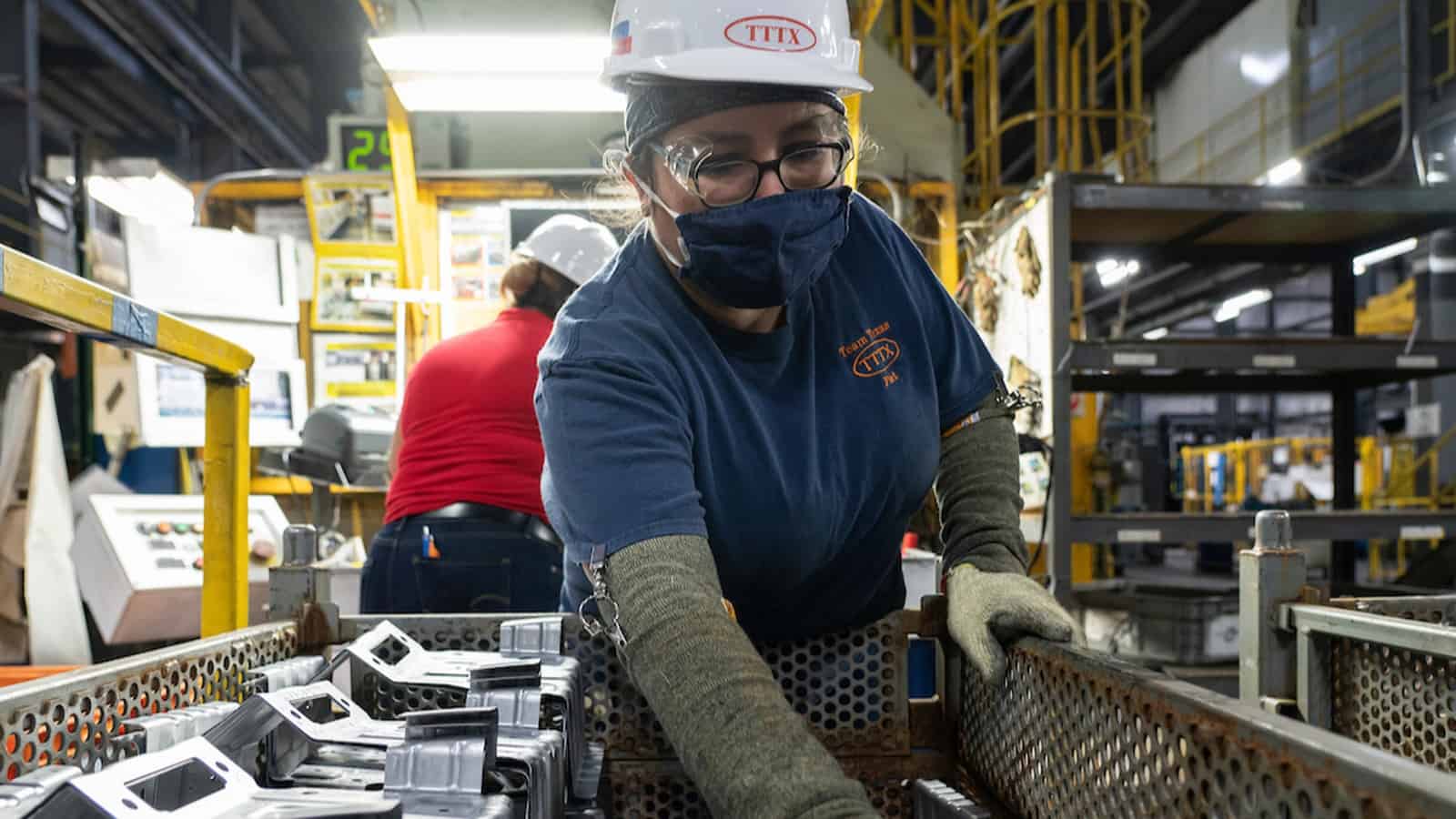
Remote work, digital twins, an increased focus on sustainability and continued talent shortages: these are just some of the trends affecting manufacturers that we’re likely to see in 2022 and beyond, according to a group of expert panelists on the recent Manufacturing Leadership Council’s “What’s Ahead in 2022?” Critical Issues Panel. The NAM’s MLC is a global business leadership network dedicated helping to senior executives leverage digital transformation in the manufacturing industry.
We rounded up some of the top predictions as they pertain to manufacturers.
Economy
- Manufacturing production will continue to be strong, said panelist and NAM Chief Economist Chad Moutray. Toward the end of 2021, it was 2% above February 2020, “a sign that we’re continuing to move in the right direction despite … continuing supply chain challenges.”
- S. labor-force participation is not likely to return “where it was pre-pandemic,” Moutray said. “A fair share of that is coming from retirement … [and] some people who are continuing to worry about child care and schooling.”
- The economy will grow about 4% in 2022, Moutray predicted.
Policy
- Washington will make moves to ease supply chain problems. “Congress knows they must do something to unleash the bottlenecks,” said panelist and NAM Senior Vice President of Policy and Government Relations Aric Newhouse. Legislation could involve workforce-participation incentivization in the form of training programs, as well as giving additional resources to ports.
- The vaccination and testing Emergency Temporary Standard will be “an area for continued movement” in 2022, Newhouse said.
Technology
- Technology will find ways to cope with what are likely to be ongoing workforce shortages, IDC Energy and Manufacturing Insights Group Vice President Kevin Prouty said. These will include automation and technologies to enable virtual and remote work.
- More manufacturers will begin using vision analytics, Prouty said, owing to the increased affordability of cameras and the ease with which footage can be analyzed, shared and moved in the cloud.
- Use of artificial intelligence will start to become the norm among manufacturers rather than the exception, panelist and MLC Content Director Penelope Brown said. “We’re seeing manufacturers move away from that research phase and much more toward a roadmap” for how they’re going to use AI in their plants.
Environment
- There will be greater, more widespread movement toward sustainability. In a recent MLC survey of manufacturers, 87% said they believed manufacturing had a responsibility to society to be more sustainable, Brown said.
Dive in deeper with the MLC’s recently redesigned website, and ensure your team has access to the MLC’s full network and suite of intel, events and other resources.
When and How Will Manufacturing Achieve Net-Zero Emissions?
Get the Latest News
Sign up here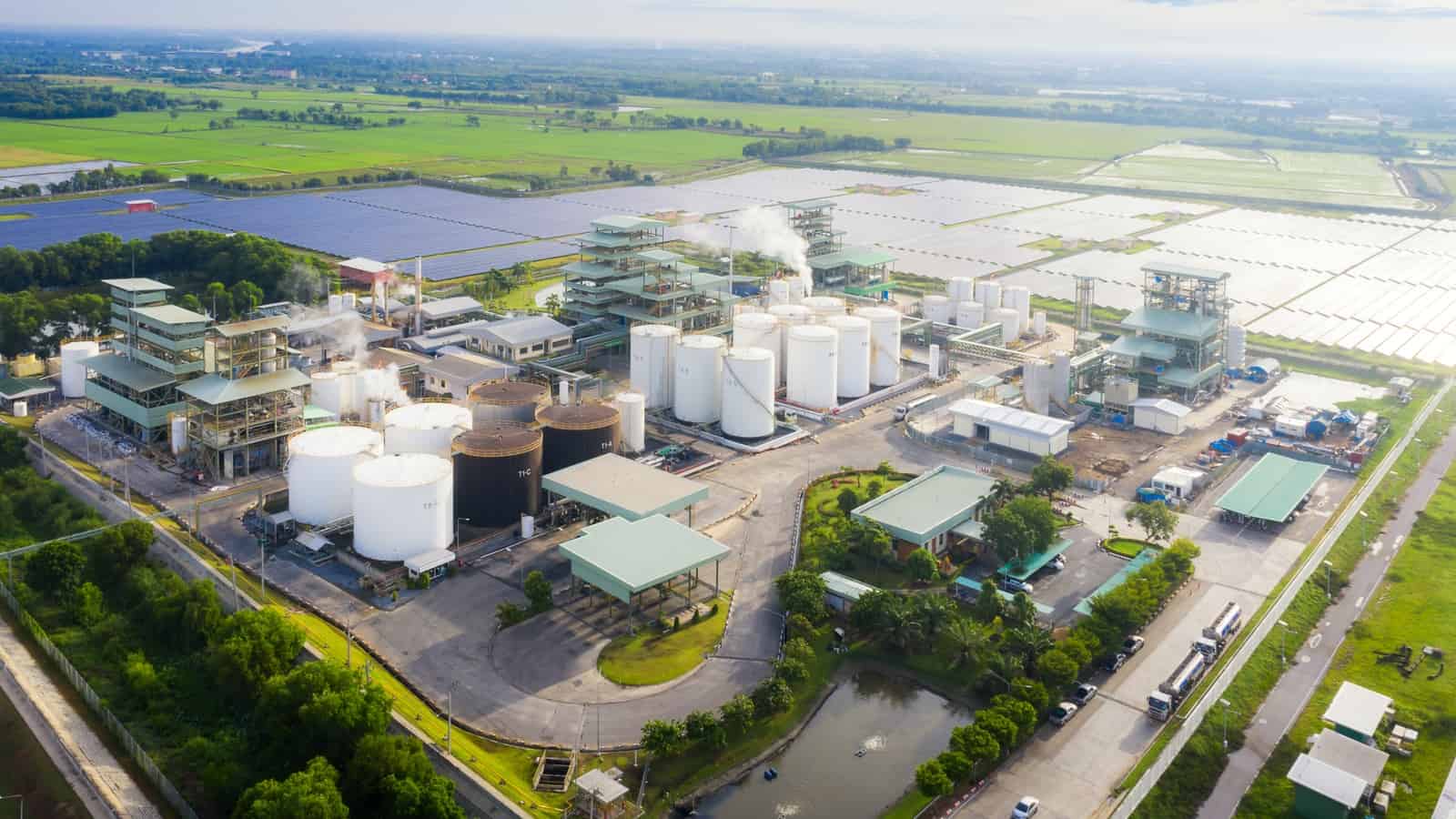
When it comes to sustainability, the question is no longer whether manufacturing needs to work to create a greener industrial future—it’s when.
To help manufacturers advance their sustainability efforts and achieve net-zero emissions by 2050, the NAM’s Manufacturing Leadership Council has dedicated the December/January issue of the Manufacturing Leadership Journal to Manufacturing 4.0 sustainability.
Key Highlights from the Latest ML Journal
- Sustainability survey: Review the results of the MLC’s latest M4.0 sustainability survey to understand manufacturing-leader sentiment about climate change. Learn how the pandemic is changing the way leaders prioritize sustainability and net-zero strategies. Plus, find out how sustainability can affect future growth and competitiveness.
- Practical examples: See what forward-thinking companies such as Procter & Gamble are doing to slash emissions and fight climate change. Also, discover M4.0 strategies and technologies to help you develop your own net-zero action plan.
- Current conversation: Understand the successes, opportunities and challenges in the race to achieve net zero by 2050. Hear from thought leaders such as MLC Co-Founder David Brousell and Lisle Corporation President Mary Lisle Landhuis.
- Potential obstacles: Learn the roadblocks to developing a sustainability program and how to overcome them. Know the challenges of adopting a circular-economy mindset and why it’s well worth having.
Why the ML Journal matters: Sustainability is just one of the exciting topics discussed in the ML Journal. Throughout the year, you’ll find case studies, interviews, technology showcases and deep insights on M4.0 from manufacturers working on the front lines. The Journal is a quick, easy way to stay current on the digital revolution—and sharpen your company’s competitive edge.
Click here to receive trial access to the entire December/January issue on M4.0 sustainability or to browse articles on a range of topics from past issues.
